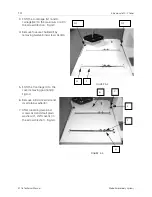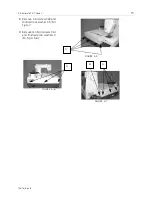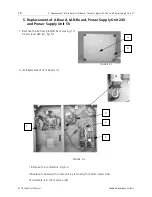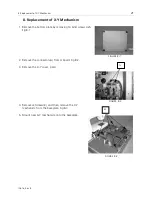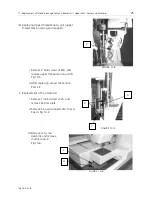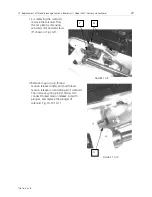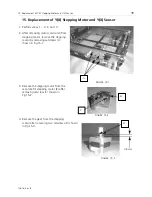
26
10. Replacement of Thread Breakage Sensor, S Board(unit), Upper Shaft Sensor and Solenoid.
EP 1B Technical Manual
Melco Embroidery Systems
IV.Remove 2 bind
head screws 4x12(J)
from backside of
base plate, and
remove bed
cover.(K) Fig.10-7.
V.Remove nylon clip
SL-3N and clip band,
and remove 2 pan
head screws(L), and
replace S board. Fig
10-8.
VI.After replacing,
assemble them in the
reverse order.
VII.Adjust the sensitivity
and tension. par.12-1.
3. Replacement of Upper Shaft
Sensor and Solenoid.
FIGURE 10-7
J
K
FIGURE 10-8
L



